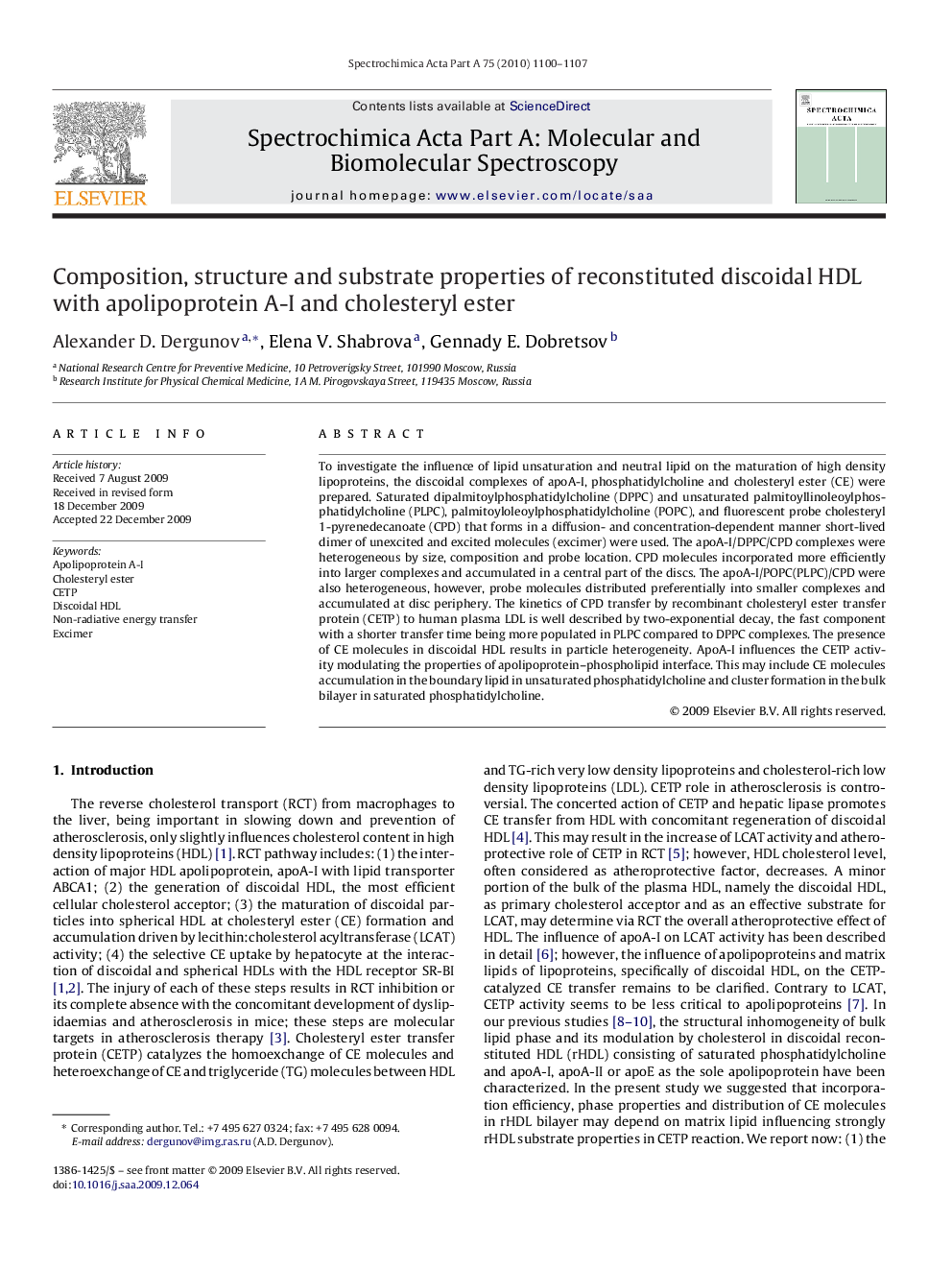| Article ID | Journal | Published Year | Pages | File Type |
|---|---|---|---|---|
| 1236951 | Spectrochimica Acta Part A: Molecular and Biomolecular Spectroscopy | 2010 | 8 Pages |
To investigate the influence of lipid unsaturation and neutral lipid on the maturation of high density lipoproteins, the discoidal complexes of apoA-I, phosphatidylcholine and cholesteryl ester (CE) were prepared. Saturated dipalmitoylphosphatidylcholine (DPPC) and unsaturated palmitoyllinoleoylphosphatidylcholine (PLPC), palmitoyloleoylphosphatidylcholine (POPC), and fluorescent probe cholesteryl 1-pyrenedecanoate (CPD) that forms in a diffusion- and concentration-dependent manner short-lived dimer of unexcited and excited molecules (excimer) were used. The apoA-I/DPPC/CPD complexes were heterogeneous by size, composition and probe location. CPD molecules incorporated more efficiently into larger complexes and accumulated in a central part of the discs. The apoA-I/POPC(PLPC)/CPD were also heterogeneous, however, probe molecules distributed preferentially into smaller complexes and accumulated at disc periphery. The kinetics of CPD transfer by recombinant cholesteryl ester transfer protein (CETP) to human plasma LDL is well described by two-exponential decay, the fast component with a shorter transfer time being more populated in PLPC compared to DPPC complexes. The presence of CE molecules in discoidal HDL results in particle heterogeneity. ApoA-I influences the CETP activity modulating the properties of apolipoprotein–phospholipid interface. This may include CE molecules accumulation in the boundary lipid in unsaturated phosphatidylcholine and cluster formation in the bulk bilayer in saturated phosphatidylcholine.
